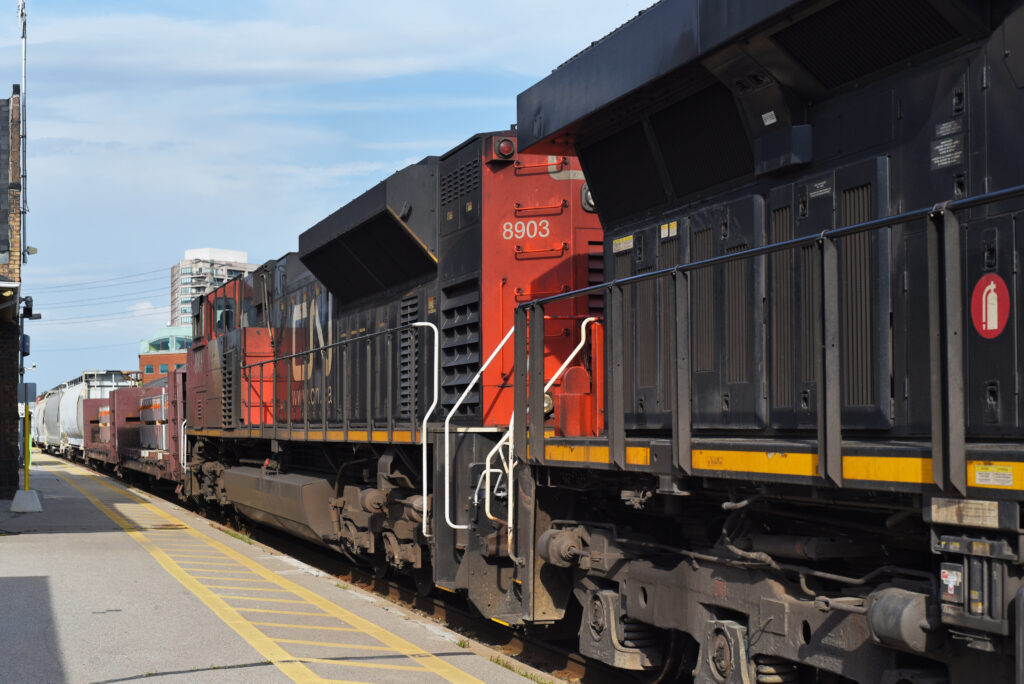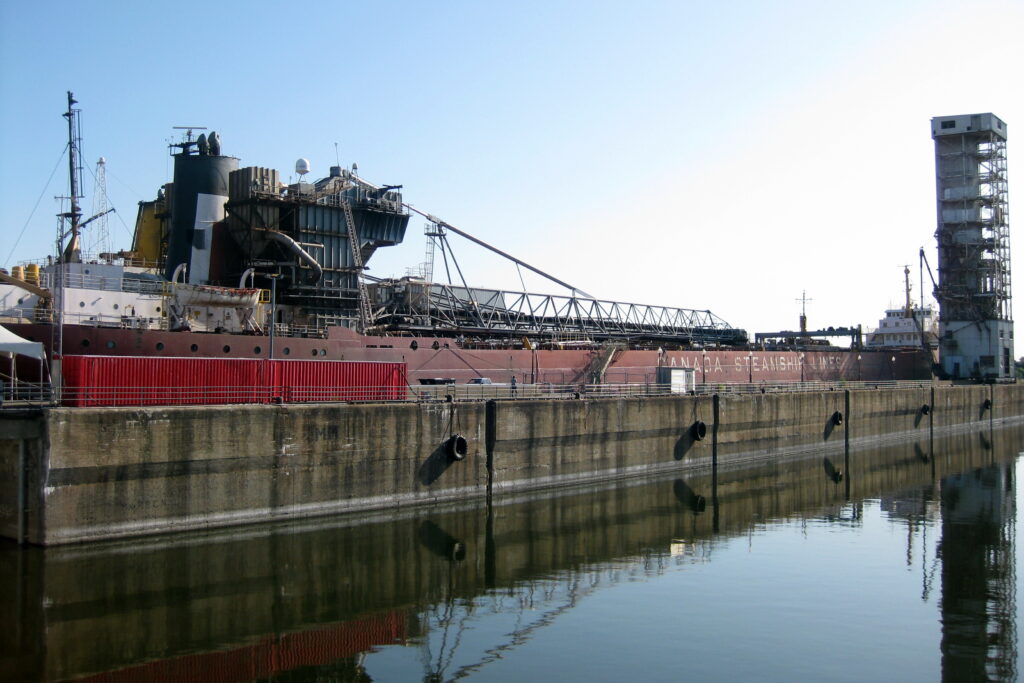While 2023 saw an upsurge in combative union struggles across North America, and even if the first quarter of the new year seems to reflect a slowdown in the labor movement, the rest of the year promises to be eventful. From Canada Post to rail workers and nurses in New Brunswick, North Star takes a look at the potential major strikes that could mark 2024.
In 2023, the strike movement in Quebec's public sector, as well as the strike movements by auto workers and UPS in the U.S., captured the media's attention and had a significant impact on the workers' movement. Yet 2024 could prove to be just as important in the Canadian labour struggle.
Canada Post
The collective agreements of the two largest unions responsible for mail distribution expired on December 31. The larger of the two, the Canadian Union of Postal Workers (CUPW), has some 54,000 members across Canada. The 11,000-member Canadian Postmasters and Assistants Association represents rural employees who operate small village post offices.
In addition to issues aimed at making up for the real drop in wages caused by inflation, letter carriers are demanding more stable jobs (20 hours a week guaranteed for part-timers), air conditioning in delivery vehicles and an end to the outsourcing of their tasks, among other things.
In December, talks with the employer got bogged down over spying on letter carriers by Canada Post executives. Against the union's wishes, the Crown corporation wants to continue spending money on the installation of "telematics" systems in vehicles to collect precise data on letter carriers at all times.

Towards the end of February, CUPW President Jan Simpson issued a statement on the state of negotiations, listing a number of demands from the employer which she described as "backward steps". These demands include vacation reductions for workers and a reduction in overtime premiums.
Negotiations between CUPW and Canada Post have a tumultuous history. The 2011 strike ended with Parliament passing a law forcing letter carriers back to work, which was ruled illegal five years later. Despite this ruling, the government again resorted to back-to-work legislation to end the 2018 strike. Negotiations between the two unions and their employer Canada Post could be long and arduous.
Rail workers
Rail workers employed by Canadian National (CN) and Canadian Pacific Kansas City (CPKC) are currently negotiating their collective agreement. United in the Teamsters Canada Rail Conference (TCRC), this union represents some 16,000 workers, 9,300 of whom are involved in these negotiations.
One of the key issues in this dispute is the desire of CN and Canadian Pacific Kansas City (CPKC) to remove rest provisions from their collective agreements. This would mean that rest conditions would be reduced to the minimum level stipulated by Canadian law: "CN and CPKC are seeking to eliminate all rest provisions from our collective agreements. These articles are essential to rail safety, as they enable workers to better manage their fatigue levels. We want to avoid a labour dispute, but the safety of our members and the public is non-negotiable," said union president François Laporte.
Having reached an impasse, both CN and CPKC have filed a notice of dispute with the government to appoint a conciliator for the negotiations. This filing begins the countdown to a possible strike or lockout by May.

In 2019, the Teamsters Union launched a nine-day strike that had a significant impact on industry and agriculture. In the U.S., the risk of a strike in the rail industry forced President Biden to intervene in the conflict, imposing a collective agreement with significant wage gains, but no sick leave, one of the main issues in that strike.
Blue-collar workers
Blue-collar workers in cities across the country such as Edmonton, Calgary, Quebec City, Yellowknife, Richmond, Kingston, Red Deer, Kamloops and Mississauga saw their collective agreements expire with the new year. Without a swift resolution, strikes could erupt in these cities, as they did in Westmount, Laval and Saint John last year.
Port of Montreal
Less than three years after the Port of Montreal longshoremen's strike ended with the adoption of special back-to-work legislation by Ottawa, Local 375 of the Canadian Union of Public Employees (CUPE), representing 1100 longshoremen, is back in negotiations after their collective agreement expired on December 31. Negotiations have already begun in a tense context between the Maritime Employers Association (MEA) and CUPE.
On February 25, 2024, the AEM issued a joint statement with the Port of Montreal auditors' union following the conclusion of their new collective agreement, in which the employer did not pass up the opportunity to take direct aim at the longshoremen by denouncing the slow pace of negotiations: "The consequences arising from the lack of progress since last September only risk aggravating an already critical situation for the population served by the Port of Montreal." A few days later, the auditors' union disavowed the statement, claiming not to have read it before it was issued in their name.

An essential services application is currently before the Canada Industrial Relations Board (CIRB), an increasingly common practice in Canada. The CIRB will determine which essential services are to be maintained in the event of a strike. In the meantime, it's impossible for the workers to go on strike or to mount pressure tactics.
New Brunswick Nurses
6,500 nurses from the New Brunswick Nurses Union are currently negotiating a new collective agreement. In the fall of 2023, union members identified two priorities: improving the retention of nurses in the province, and combatting the use of private agencies to staff healthcare facilities.
These negotiations are taking place in a tense political climate in New Brunswick, with the adoption of a reform aimed at modifying the pension plans of five groups of public sector workers, including educational support employees, bus drivers, and nursing home employees and nurses. This reform, adopted on December 12, is strongly contested by the union movement, which considers it an infringement of their bargaining rights, since it unilaterally imposes the change to a "shared risk" pension plan.
CUPE has even raised the possibility of illegal strikes by their members, as the reform would force them to join the new pension plan.
A strike by New Brunswick nurses could quickly create a politically charged movement within the New Brunswick public, with support from other unions affected by the reforms.
Conclusion
Because of these workers' essential strategic position in the Canadian economy and infrastructure, their labour struggles could be at the forefront of the Canadian labour movement this year. A strike in one of these sectors could lead the federal government to intervene in negotiations, whether to force a compromise or to impose special back-to-work legislation.
It's this kind of movement and fighting spirit that has profoundly influenced workers' living conditions throughout Canada's history. While the recent resurgence of combativity is encouraging, a major distinction lies in comparison with the great strikes of the first half of the 20th century up to the 1970s. Those strikes were characterized by strong public support and a pronounced political dimension, forcing governments to respond to workers' needs. Perhaps this is where the labor movement needs to turn to avoid compromised results. But the question remains: how can workers reproduce these social upheavals involving issues broader than their immediate demands, capable of drawing the whole population into their wake?


